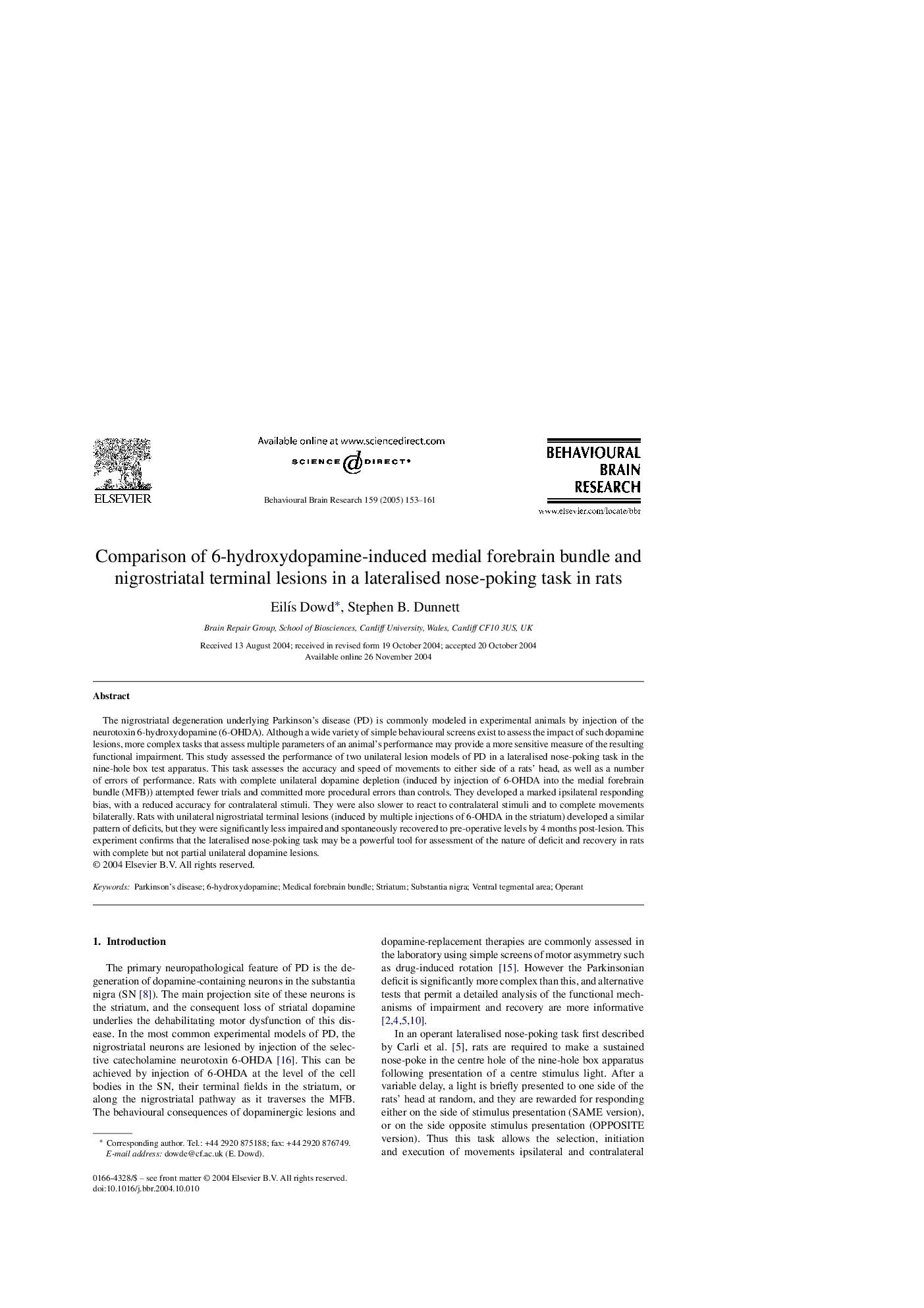| Article ID | Journal | Published Year | Pages | File Type |
|---|---|---|---|---|
| 9406673 | Behavioural Brain Research | 2005 | 9 Pages |
Abstract
The nigrostriatal degeneration underlying Parkinson's disease (PD) is commonly modeled in experimental animals by injection of the neurotoxin 6-hydroxydopamine (6-OHDA). Although a wide variety of simple behavioural screens exist to assess the impact of such dopamine lesions, more complex tasks that assess multiple parameters of an animal's performance may provide a more sensitive measure of the resulting functional impairment. This study assessed the performance of two unilateral lesion models of PD in a lateralised nose-poking task in the nine-hole box test apparatus. This task assesses the accuracy and speed of movements to either side of a rats' head, as well as a number of errors of performance. Rats with complete unilateral dopamine depletion (induced by injection of 6-OHDA into the medial forebrain bundle (MFB)) attempted fewer trials and committed more procedural errors than controls. They developed a marked ipsilateral responding bias, with a reduced accuracy for contralateral stimuli. They were also slower to react to contralateral stimuli and to complete movements bilaterally. Rats with unilateral nigrostriatal terminal lesions (induced by multiple injections of 6-OHDA in the striatum) developed a similar pattern of deficits, but they were significantly less impaired and spontaneously recovered to pre-operative levels by 4 months post-lesion. This experiment confirms that the lateralised nose-poking task may be a powerful tool for assessment of the nature of deficit and recovery in rats with complete but not partial unilateral dopamine lesions.
Related Topics
Life Sciences
Neuroscience
Behavioral Neuroscience
Authors
EilÃs Dowd, Stephen B. Dunnett,
